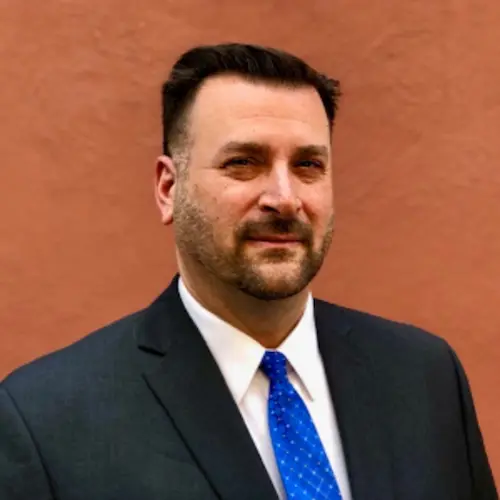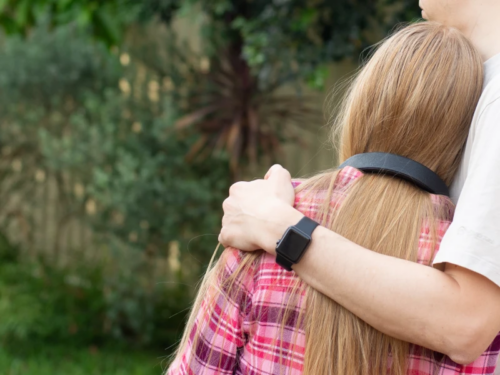
Table of Contents
5 Therapist-Approved Tips for How to Fix Attachment Issues

Written By: Sarah Fielding

Clinically Reviewed By: Dr. Don Gasparini
November 8, 2023
7 min.
You can work on any unhealthy attachment issues through journaling, speaking with trusted loved ones, or talking to a therapist.
Learn more about our Clinical Review Process
Table of Contents
Have you ever felt unworthy of someone in your life or immediately anxious when you’re not around them? On the other hand, maybe you avoid connecting with people to minimize your reliance on them or view emotional vulnerability as a weakness. Everyone feels connected to others in different ways, also known as their attachment style.
Attachment theory was developed by two psychologists, Mary Ainsworth and John Bowlby, and initially looked at how a primary caregiver’s absence impacted children. It has since grown into a method of understanding how all individuals interact and feel within relationships — often with a specific focus on exploring negative emotions.
There are four main attachment styles: secure attachment, anxious attachment, dismissive attachment (also known as dismissive avoidant attachment), and fearful-avoidant attachment (also known as disorganized attachment or avoidant attachment). Keep reading to delve deeper into attachment theory and gain a better grasp of how to fix attachment issues.

Learn how to build healthier relationships with Charlie Health
Skills-based therapy program.
How to fix attachment issues
1. Identify your attachment style
To fix any unhealthy attachment issues you’re dealing with, you need first to understand your attachment style. “Gaining self-awareness is the best tool to work through unhealthy attachments,” says Matt Schubert, a licensed professional counselor.
As mentioned, the four main attachment styles are secure, anxious, dismissive, and fearful-avoidant. Many people exhibit a mix of different attachment style traits, but your emotions and behaviors usually indicate the one that suits you most. “You do not need to know all the ins and outs of attachment theory or strive to get all the terms correct to benefit from understanding the basics,” says Dr. Kelsey Latimer, a licensed psychologist.
One way to figure out your attachment style is to look at the relationships in your life and how you act and feel in them. Anthony Nave, LCSW, a clinical director, recommends asking yourself questions like: “Do you often feel anxious or cornered around that person?” and “When you are not with your partner, do you find yourself persistently concerned about the relationship?” Below, Nave explains the main characteristics of each attachment style.

Secure attachment
No one feels secure in themselves and their relationships in every moment of every day. However, people who fall into this attachment style tend to be comfortable with being vulnerable, expressing their feelings, and supporting loved ones as needed, says Nave. If you have a secure attachment style, you understand what you need, including boundaries, and will feel sure of yourself in a relationship.
Anxious attachment
Then, there are the insecure attachment styles. Also referred to as anxious-preoccupied or ambivalent, an anxious attachment style is all about the concern that a loved one will ignore or leave you at any time. With an anxious attachment, you likely have a negative self-view but put others on a pedestal. Exhibiting an anxious attachment style might also lead you to regularly seek attention from people you care about while feeling anxious at even the thought of being apart from your partner. Sure, you might just be an anxious individual, but insecurity and fear of abandonment can both play big parts here.
Dismissive attachment
In contrast to people with an anxious attachment style, if you have a dismissive attachment style (also known as dismissive avoidant attachment), then you minimize your vulnerability around or reliance on other people. You will likely keep quiet instead of going to a partner or friend to discuss problems with your relationship.
Fearful-avoidant attachment
Did you relate to an anxious attachment and dismissive avoidant attachment style? Then, you might actually have a fearful-avoidant attachment style, which is a combination of the two (it’s also called the disorganized attachment style because people with this style switch between anxious and dismissive attachment in different situations). Each of these three is classified as an insecure attachment style. “For this reason, someone with fearful-avoidant attachment tends to show confusing and ambiguous behaviors in their social bond,” says Nave. “If you had abusive relationships in the past, you may subconsciously try to recreate those relationships while hoping for a different outcome. These behaviors can be labeled as trauma imprints and often continue a cycle of trauma and reinforce negative beliefs we have about ourselves.” An unhealthy emotional attachment and relationship insecurity can fuel a fearful-avoidant attachment.
2. Determine if you’re dealing with unhealthy attachments
Attachment styles exist on a spectrum, meaning people of all attachment styles (including insecure ones) can have healthy and adaptive relationship patterns. On the flip side, people of all attachment styles can also have unhealthy attachments (that’s right, even those with a secure attachment style can experience unhealthy dynamics in certain relationships).
According to the mental health professionals we spoke to, here are the signs of unhealthy attachments:
- Overly pushy
- Consistently oversharing
- Lacking boundaries
- Completely immersing yourself in the other person’s life
- Avoiding social interactions
- Excessively worrying about how others perceive you
- Struggling to ask for help
- Distancing yourself from a partner
If this sounds like you, you may be dealing with unhealthy attachments. Self-awareness and kindness are important at this step. Don’t think of yourself as having “attachment problems” but simply needing to develop healthier attachment patterns. What matters is becoming aware of unhealthy attachments and creating a healthier sense of self and relationships in your life.
3. Journal
Wondering how to work on yourself to heal unhealthy attachments? A wonderful way to start doing this is journaling the thoughts that relationships stir up in you, suggests Nave. You can consider different situations that arise in relationships—conflict, changing plans, being asked for help—and consider your automatic thoughts.
By identifying these automatic thoughts, people can then work on challenging and reframing them. “Emotions and behaviors are simply byproducts of our thoughts,” says Schubert. “If we do not take the time and effort to intentionally examine our thoughts, we will be unable to change these patterns.” This reflection is an opportunity to analyze where the emotions are coming from and any patterns of anxiety or avoidance that you demonstrate.
4. Talk to someone you have a healthy relationship with
According to Nave, another avenue you could explore is speaking with the people in your life with whom you have a healthy relationship. This could be a friend, family member, or romantic partner. Regardless of your attachment style, it’s important to remember that in this close relationship, you have a healthy attachment.
This person can help you figure out which signs of unhealthy attachments you demonstrate in other relationships. Anyone you have a healthy relationship with can give you perspective on connections you’ve already identified as triggering, says Schubert. But don’t let them control the narrative, either. Listen to their perspective and consider it as you evaluate how you feel and respond to different relationships.

5. Seek professional help
Therapy can also be a tremendous tool in understanding where any unhealthy attachment stems from, learning more about attachment theory, and coping with any insecure attachment you have in romantic relationships or other dynamics. “Ultimately, we really deserve to heal these wounds, and that can be done by going to therapy where you learn to parent ‘the child within you’ and create and build trust within yourself to be a healthy adult with strong boundaries,” says Latimer. “That will be protective in your relationships and help you feel at the end of the day that you are a valuable human being that deserves and belongs.”
You can also use any and all of these techniques and support systems to work on yourself and fix attachment issues while in therapy. The process can be challenging and might not always be successful, but working on yourself is always worthwhile. “This brings us full circle to where the healing process first started, which is repairing the relationship with yourself first,” says Nave. “This will help you to understand that you can both be sad that a relationship is not working but also feel relief that after trying, you have gained insight the best option to continue to heal is for a relationship to end — leading to the potential of new healthy attachments forming.”
Fixing attachment issues with Charlie Health
If you’re struggling with attachment issues and want to develop healthier relationship patterns, Charlie Health is here to help.
Charlie Health’s virtual Intensive Outpatient Program (IOP) provides people with individual counseling, group sessions, and family therapy to dive further into the mental health concerns underlying attachment issues. Our team of expert clinicians use trauma-informed techniques to ensure that healing happens in a safe, supportive environment.




